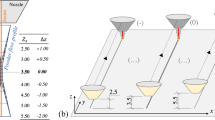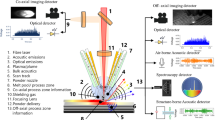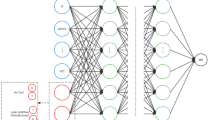Abstract
In recent years, metal cellular structures have drawn attentions in various industrial sectors due to their design freedoms and abilities to achieve multi-functional mechanical properties. However, metal cellular structures are difficult to fabricate due to their complex geometries, even with modern additive manufacturing technologies such as the direct metal laser sintering (DMLS) process. Assessing the manufacturability of metal cellular structures via a DMLS process is a challenging task as the geometric features of the structures are complex. Besides, via a DMLS process, the manufacturability also depends on the cumulative deformation of the layers during the manufacturing process. Existing methods on Design for Additive Manufacturing (DFAM) provide design guidelines that are based on past successful printed designs. However, they are not effective in predicting the manufacturability of metal cellular structures. In this paper, we propose a semi-supervised deep learning based manufacturability assessment (SSDLMA) framework to assess whether a metal cellular structure can be successfully manufactured from a given DMLS process. To enable efficient learning, we represent the complex cellular structures as 3D binary arrays with a simple yet efficient voxelisation method. We then train a deep learning based classifier using only a small amount of experimental data by adopting a semi-supervised learning approach. By running real experiments and comparing with existing DFAM methods and machine learning models, we demonstrate the advantages of the proposed SSDLMA framework. The proposed framework can be extended to predict the manufacturability of various other complex geometries beyond cellular structure in a reliable way even with a small number of training data.















Similar content being viewed by others
References
3D SYSTEMS. (2018). ProJet MJP wax 3D printing is a Gem to Uptown Diamond & Jewelry.
Afazov, S., Denmark, W. A., Lazaro Toralles, B., Holloway, A., & Yaghi, A. (2017). Distortion prediction and compensation in selective laser melting. Additive Manufacturing, 17, 15–22.
Ahmadi, S., Yavari, S., Wauthle, R., Pouran, B., Schrooten, J., Weinans, H., et al. (2015). Additively manufactured open-cell porous biomaterials made from six different space-filling unit cells: The mechanical and morphological properties. Materials, 8, 1871–1896.
Aminzadeh, Masoumeh, & Kurfess, Thomas R. (2019). Online quality inspection using Bayesian classification in powder-bed additive manufacturing from high-resolution visual camera images. Journal of Intelligent Manufacturing, 30(6), 2505–2523.
Bayat, M., Mohanty, S., & Hattel, J. H. (2019). Multiphysics modelling of lack-of-fusion voids formation and evolution in IN718 made by multi-track/multi-layer L-PBF. International Journal of Heat and Mass Transfer, 139, 95–114.
Cansizoglu, O., Harrysson, O. L., West, H. A., Cormier, D. R., & Mahale, T. (2008). Applications of structural optimization in direct metal fabrication. Rapid Prototyping Journal, 14(2), 114–122.
Clijsters, S., Craeghs, T., Moesen, M., & Kruth, J.-P. (2012). Optimization of thin wall structures in SLM. In Fraunhofer additive manufacturing alliance, direct digital manufacturing conference (pp. 14–15).
EOS GmbH. (2011). Electro optical systems, 2011. “Material data sheet EOS MaragingSteel MS1” (pp. 1–6).
EOS GmbH. (2018). Help is fast at hand thanks to additive manufacturing: Alphaform produces a hip replacement designed by instrumentaria.
Ghadai, S., Balu, A., Sarkar, S., & Krishnamurthy, A. (2018). Learning localized features in 3D CAD models for manufacturability analysis of drilled holes. Computer Aided Geometric Design, 62, 263–275.
Giannitelli, S., Accoto, D., Trombetta, M., & Rainer, A. (2014). Current trends in the design of scaffolds for computer-aided tissue engineering. Acta Biomaterialia, 10(2), 580–594.
Gibson, I., Rosen, D., & Stucker, B. (2015). Additive manufacturing technologies: 3D printing, rapid prototyping and direct digital manufacturing (2nd ed.). Springer.
Grasso, M., & Colosimo, B. M. (2017). Process defects and in situ monitoring methods in metal powder bed fusion: A review. Measurement Science and Technology, 28(4), 044005. https://doi.org/10.1088/1361-6501/aa5c4f.
Helou, M., & Kara, S. (2018). Design, analysis and manufacturing of lattice structures: An overview. International Journal of Computer Integrated Manufacturing, 31(3), 243–261.
Hussein, A., Hao, L., Yan, C., Everson, R., & Young, P. (2013). Advanced lattice support structures for metal additive manufacturing. Journal of Materials Processing Technology, 213(7), 1019–1026.
Keller, N., & Ploshikhin, V. (2014). New Method for Fast Predictions of Residual Stress and Distortions of AM Parts. Solid Freeform Fabrication Symposium, (August 2014), pp. 1229–1237.
Kingma, D. P., Rezende, D. J., Mohamed, S., & Welling, M. (2014). Semi-supervised learning with deep generative models. In Proceedings of the 27th international conference on neural information processing systems, NIPS’14 (Vol. 2, pp. 3581–3589), MIT Press.
Kranz, J., Herzog, D., & Emmelmann, C. (2015). Design guidelines for laser additive manufacturing of lightweight structures in TiAl6V4. Journal of Laser Applications, 27(S1), S14001.
Materialise Magics. (2018). https://www.materialise.com/en/software/magics.
Materialise, N. V. (2013). Iris van Herpen debuts wearable 3D printed pieces at Paris fashion week. Retrieved from https://www.materialise.com/en/cases/iris-van-herpen-debuts-wearable-3d-printed-pieces-at-paris-fashion-week.
Mercelis, P., & Kruth, J. P. J. (2006). Residual stresses in selective laser sintering and selective laser melting. Rapid Prototyping Journal, 12(5), 254–265.
Ning, J., Sievers, D. E., Garmestani, H., & Liang, S. Y. (2019a). Analytical modeling of in-process temperature in powder bed additive manufacturing considering laser power absorption, latent heat, scanning strategy, and powder packing. Materials, 12(5), 1–16.
Ning, J., Sievers, D. E., Garmestani, H., & Liang, S. Y. (2019b). Analytical thermal modeling of metal additive manufacturing by heat sink solution. Materials, 12(16), 1–15.
Ning, J., Sievers, D. E., Garmestani, H., & Liang, S. Y. (2020). Analytical modeling of in-situ deformation of part and substrate in laser cladding additive manufacturing of Inconel 625. Journal of Manufacturing Processes, 49(May 2019), 135–140.
Ning, J., Wang, W., Zamorano, B., & Liang, S. Y. (2019c). Analytical modeling of lack-of-fusion porosity in metal additive manufacturing. Applied Physics A: Materials Science and Processing, 125(11), 1–11.
Paul, R., Anand, S., & Gerner, F. (2014). Effect of thermal deformation on part errors in metal powder based additive manufacturing processes. Journal of Manufacturing Science and Engineering, 136(3), 031009. https://doi.org/10.1115/1.4026524.
Pedregosa, F., Varoquaux, G., Gramfort, A., Michel, V., Thirion, B., Grisel, O., et al. (2011). Scikit-learn: Machine learning in Python. Journal of Machine Learning Research, 12, 2825–2830.
Powers, D. M. W. (2011). Evaluation: From precision, recall and F-measure to ROC, informedness, markedness and correlation. International Journal of Machine Learning Technology, 2(1), 37–63.
Pradel, P., Zhu, Z., Bibb, R., & Moultrie, J. (2018). Investigation of design for additive manufacturing in professional design practice. Journal of Engineering Design, 29(4–5), 165–200.
Radford, A., Metz, L., & Chintala, S. (2015). Unsupervised representation learning with deep convolutional generative adversarial networks. CoRR. arXiv:1511.06434
Ranjan, R., Samant, R., & Anand, S. (2017). Integration of design for manufacturing methods with topology optimization in additive manufacturing. Journal of Manufacturing Science and Engineering, 139(6), 061007.
Redwood, B., Schöffer, F., & Garret, B. (2017). The 3D printing handbook: Technologies, design and applications. 3D HUBS.
Salimans, T., Goodfellow, I. J., Zaremba, W., Cheung, V., Radford, A., & Chen, X. (2016). Improved techniques for training gans. CoRR. arXiv:1606.03498
Scime, L., & Beuth, J. (2018). A multi-scale convolutional neural network for autonomous anomaly detection and classification in a laser powder bed fusion additive manufacturing process. Additive Manufacturing, 24, 273–286.
Soe, S. P. (2012). Quantitative analysis on SLS part curling using EOS P700 machine. Journal of Materials Processing Technology, 212(11), 2433–2442.
Thompson, M. K., Moroni, G., Vaneker, T., Fadel, G., Campbell, R. I., Gibson, I., et al. (2016). Design for additive manufacturing: Trends, opportunities, considerations, and constraints. CIRP Annals, 65(2), 737–760.
Vincent, P., Larochelle, H., Lajoie, I., Bengio, Y., & Manzagol, P.-A. (2010). Stacked denoising autoencoders: Learning useful representations in a deep network with a local denoising criterion. Journal of Machine Learning Research, 11, 3371–3408.
Walton, D., & Moztarzadeh, H. (2017). Design and development of an additive manufactured component by topology optimisation. Procedia CIRP, 60, 205–210.
Yang, L., Harrysson, O., Cormier, D., West, H., Gong, H., & Stucker, B. (2015). Additive manufacturing of metal cellular structures: Design and fabrication. JOM, 67(3), 608–615.
Acknowledgements
The research is partially supported by National University of Singapore Centre for Additive Manufacturing.
Author information
Authors and Affiliations
Corresponding author
Additional information
Publisher's Note
Springer Nature remains neutral with regard to jurisdictional claims in published maps and institutional affiliations.
Rights and permissions
About this article
Cite this article
Guo, Y., Lu, W.F. & Fuh, J.Y.H. Semi-supervised deep learning based framework for assessing manufacturability of cellular structures in direct metal laser sintering process. J Intell Manuf 32, 347–359 (2021). https://doi.org/10.1007/s10845-020-01575-0
Received:
Accepted:
Published:
Issue Date:
DOI: https://doi.org/10.1007/s10845-020-01575-0




